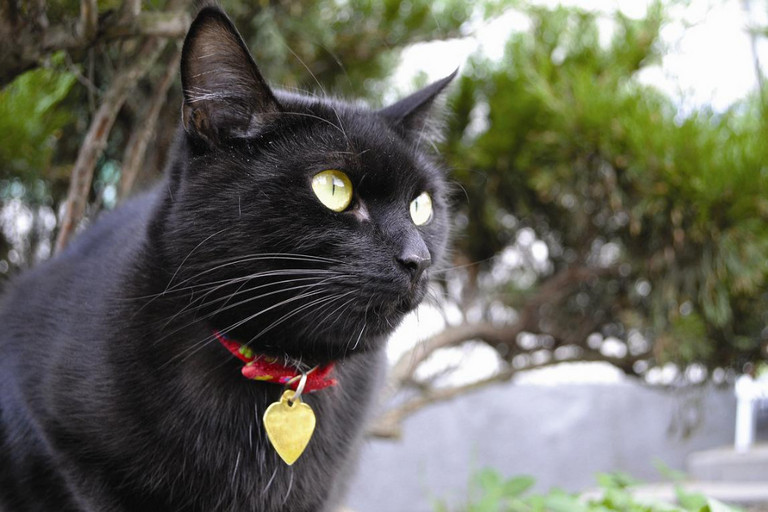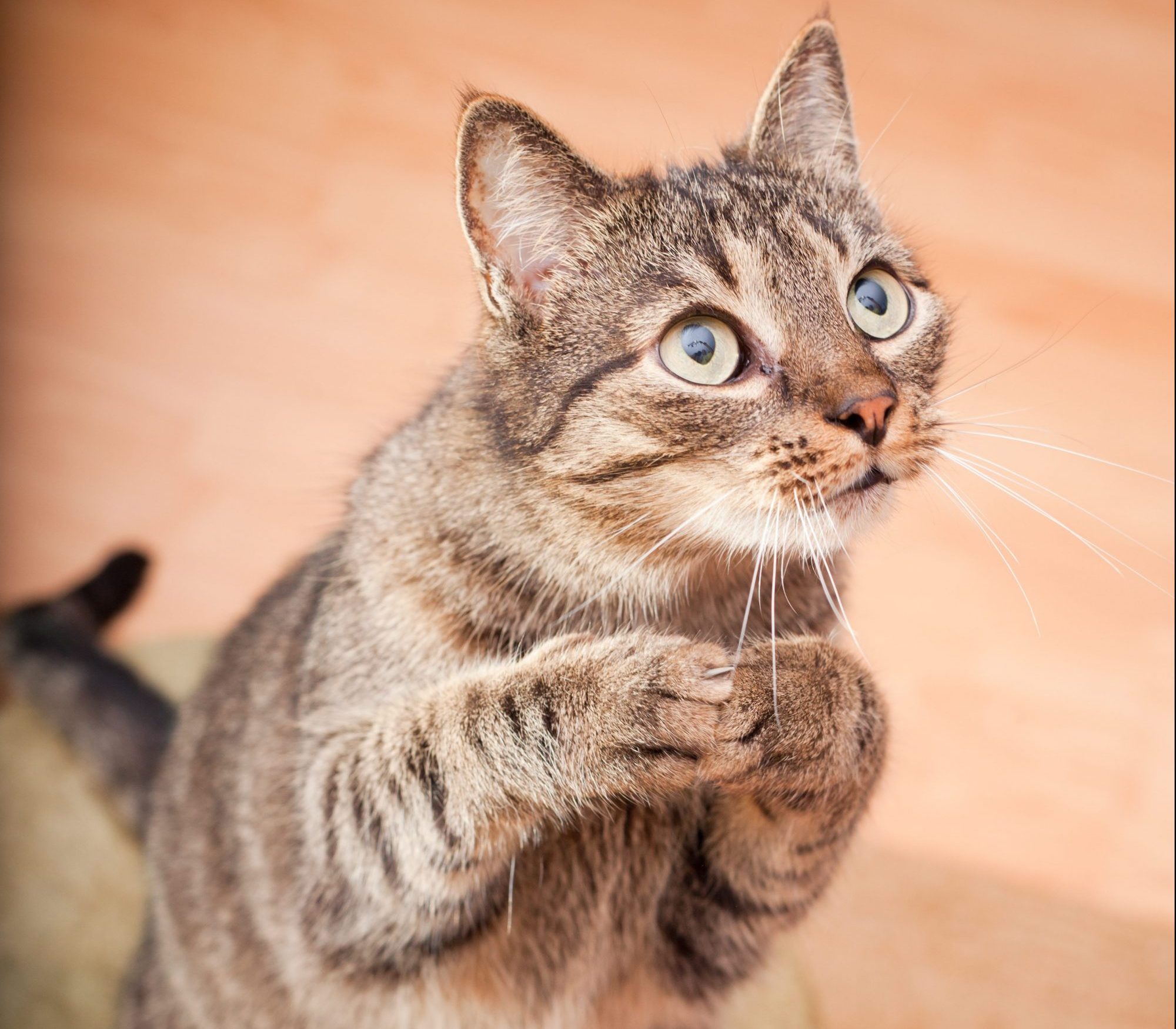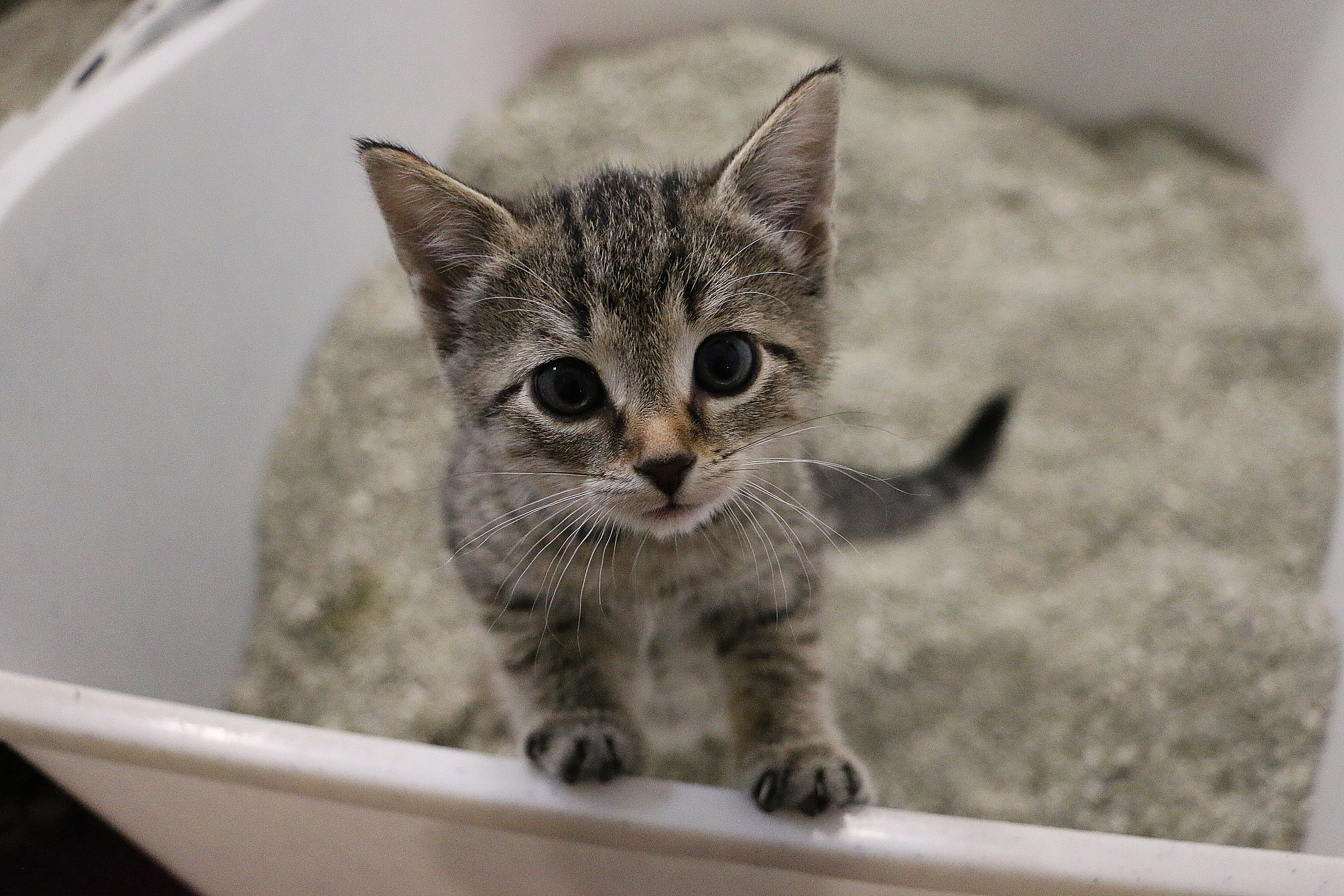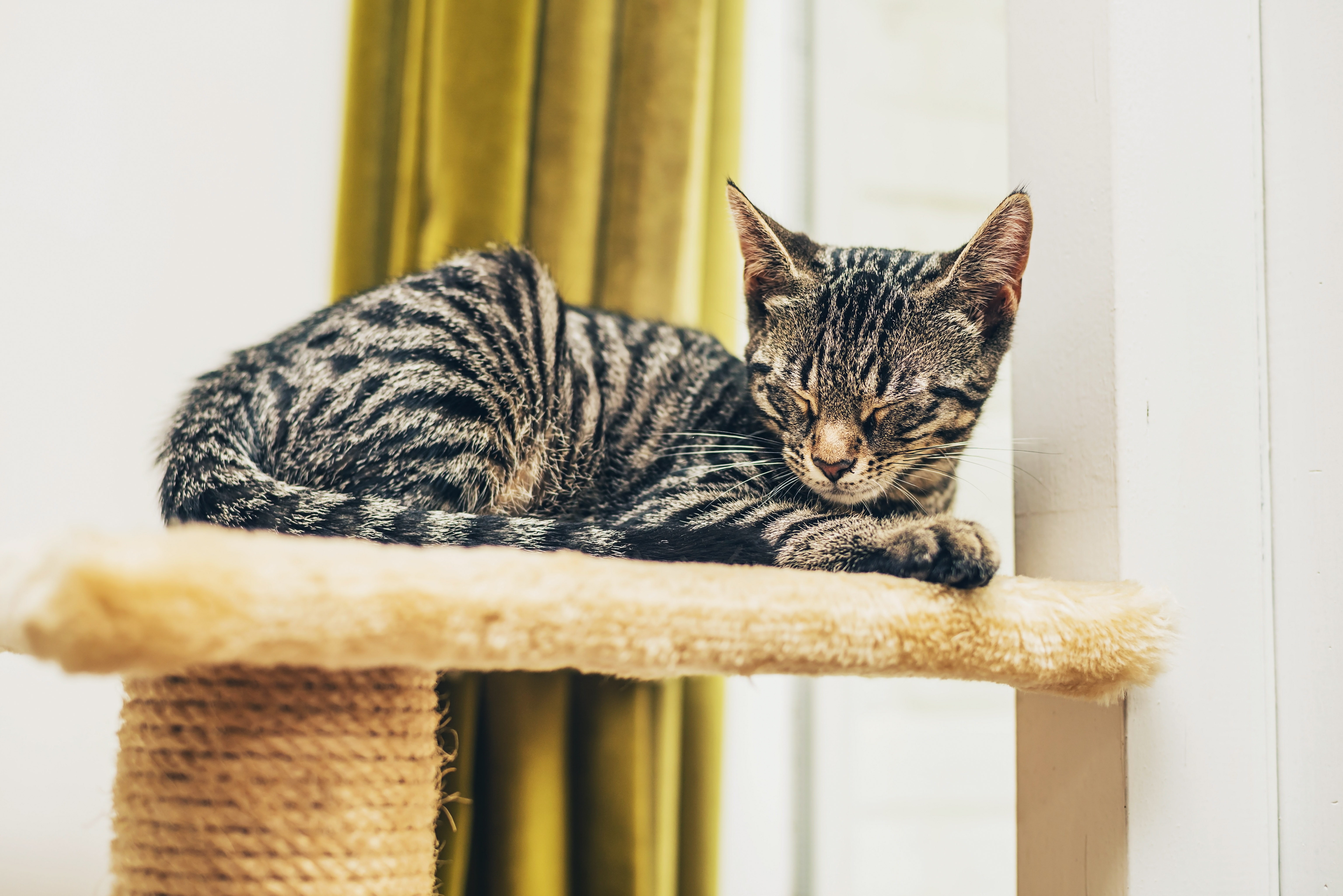Not Your Ordinary Tag
Stacy Mantle //April 2, 2014//
Not surprisingly, the ASPCA reports that only about 33 percent of pet owners keep their pets properly tagged all the time, which perhaps accounts for why the Humane Society reports that only 2 to 5 percent of shelter cats are reclaimed by their owners. 
Even if a cat is indoors only, they still need to wear identification. Doors get left open, screens can be pushed from windows and one can never predict when an emergency may strike. Many cats are lost each year due to fires in the home, weather disasters and other unplanned situations.
The most effective combination of identification methods for felines consist of a collar with ID tags and a microchip.
ID Tags
As cats are obviously much smaller than most dogs, they require a lightweight ID tag that won’t interfere with movement. However, this oftentimes leaves very little room to list identification and the owner’s contact information.
These days, new technology allows for ID tags that encompass entire data sets. There are specially designed tags that contain a QR code so anyone who finds the animal can simply scan the code with their smartphone, and know everything that animal requires, as well as the information needed to return the animal.
For example, Pet Hub allows cat owners to create multiple emergency contacts and list any critical medical information related to the animal. A 24/7 toll-free “found” pet hotline enables anyone to contact them, even if they do not understand how to use a QR reader.
Blanket ID creates designer tags that will never scratch or fade, and are even available for private labeling. The waterproof casing allows pets to be as active as necessary and the stylish tag helps ensure that information will be read. By creating a specific ID number, anyone who finds a pet can access the Internet page for that pet; the owner controls what information is given out upon recovery.
“A blanket ID provides a 24/7 link to everything you would want someone to know if they found your cat,” Martin Hubbard, co-owner of Blanket ID, said. “If your pet is reported found via a smartphone, you can receive a GPS map of that location and driving directions. And Blanket ID’s ‘Missing Pet’ program immediately alerts local animal control facilities, veterinarians, and other BlanketID members with the information they need to identify and care for your cat.”
Dog Tag Art Virtual Leash was founded when Jack Carrier lost his Labrador retriever, Maggie. Once a Virtual Leash account is established, pets receive a unique URL that is imprinted on the tag. When the FINDER clicks the “I found this pet” button, they enter the last 4 digits printed on the tag for security, then their name, phone number and a simple message. The owner can be notified through social media, email or by phone.
Virtual Leash also uses Google Maps to show those who find the pets where to return them. All of this information can be easily changed when the owner has to travel or if they move. There are several subscription plans offered, which range from $11.99 per year to a lifetime enrollment of $89.
For fun, creative ID tags, ID4Pet offers entertainment-themed tags for pets that are durable and lightweight.
“ID4Pet is the only company on the market [that] offers tags made of fiberglass reinforced plastic and jewelry finish,” Catt Moretti, owner and design of ID4Pet, said. “And because of that, our tags are sturdy, durable with beautiful designs, waterproof and extremely lightweight.”
Microchip
Microchipping is perhaps the most effective solution of ensuring a cat will be identified if it becomes lost. The tiny transponders are about the size of a grain of rice and contain a miniaturized coil and memory circuit. When implanted properly, they are a nearly tamper-proof and inexpensive first step to making sure your pet can be identified and returned.
The price to implant a microchip ranges from free to approximately $65. Clinics can easily be found in various regions that offer free implantation, and registration in a national database is typically included for the first year. Membership after that time depends on the company, but is usually renewable at less than $20 per year.
While good progress has been made in microchipping cats, there is still tremendous growth needed to keep animals protected. According to a study from Home Again, “less than 1 percent of cats arriving at U.S. shelters are microchipped.”
This presents a great opportunity to boutique pet stores who can offer adoption days and free microchipping to their customers in order to encourage responsible pet ownership.
Carrier ID
Not only should your cat wear ID, your carriers should also have ID tags. The beautifully designed pendants from Sleepypod help guarantee a cat and carrier will be returned to the owner while at the vet’s or during travel.
“Our new Sleepypod Pendants can be used for pet identification or as a stylish and fun carrier identification tag when attached to any of our carriers,” Michael Leung, director of product development at Sleepypod, said. “Sleepypod is constantly striving to offer the safest travel products for pets. We see families bringing their pets on vacation more often than ever, and we hope that our products will increase the enjoyment and reduce the hassles of travel. We travel with our pets often and many of our products are invented because of our own travel adventures with our furry friends.”



















